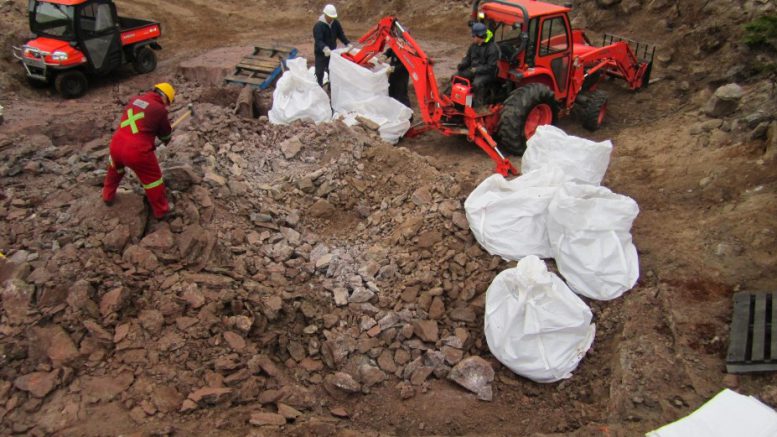Torngat Metals is advancing its longstanding Strange Lake rare earths project in northeastern Quebec toward both a feasibility study and permitting. Strange Lake could produce up to 55,000 tonnes of ore per day over 30 years, and give Canada its first rare earths mine.
In a notice posted Friday on its registry, the Impact Assessment Agency of Canada (IAAC) says it’s inviting feedback from Indigenous peoples and the public on Torngat’s initial project description. Virtual public information sessions will be held in English and French on Oct. 30 and Nov. 2, and feedback can also be emailed to IAAC. Comments will help the agency write up a summary of issues related to the project and decide if it should undergo an impact assessment. IAAC is working with the governments of Nunatsiavut and Newfoundland and Labrador and comments received will be shared among the jurisdictions.
Privately owned Torngat says it has funding to complete a prefeasibility study for the project next year, followed by a feasibility study. Strategic partner Cerberus Capital is providing US$50 million. Strange Lake is located in the Nunavik region, about 235 km northeast of Schefferville, Que.
According to Torngat’s proposal on the IAAC website, the Strange Lake open-pit mine would comprise a 1,500-metre-long airstrip, a new metal mill with capacity of 17,000 tonnes per day, waste rock and tailings piles, and related buildings.
Torngat would also build a seasonal road of about 160 km between the site and the port of Voisey’s Bay, on the Labrador coast, where Vale’s (NYSE: VALE) nickel-copper mine is located. The mined rare earth concentrate would then be transported by road and then shipped to a separation plant in Sept-Îles, about 650 km northeast of Quebec City.
The start of public consultations comes almost a decade after Torngat’s predecessor, the publicly traded Quest Rare Minerals released a prefeasibility study for Strange Lake. Quest later filed for bankruptcy in 2018. Torngat is planning to release its own prefeasibility study next year, to be followed by a feasibility study.
Production of rare earths, which are essential components in technology that includes smartphones and permanent magnets that are used in electric vehicles, wind turbines and other applications, is dominated by China. There are no rare earth mines in Canada and only one in the United States — MP Materials‘ (NYSE: MP) Mountain Pass in California. Just last month, Vital Metals‘ (ASX: VML) Canadian processing subsidiary declared bankruptcy. Vital holds the Nechalacho rare earths project in the Northwest Territories.
Initial capital costs for Strange Lake in Quest’s now outdated study were pegged at $2.6 billion.
The study estimated indicated resources at Strange Lake’s main B-zone deposit at 278.1 million tonnes at 0.93% total rare earth oxides (TREO); 1.92% zirconium oxide and 0.18% niobium pentoxide. Inferred resources were 214.4 million tonnes of 0.85% TREO, 1.71% zirconium oxide and 0.14% niobium pentoxide.


Be the first to comment on "Torngat Metals hopes to revive Strange Lake rare earths project in Quebec"